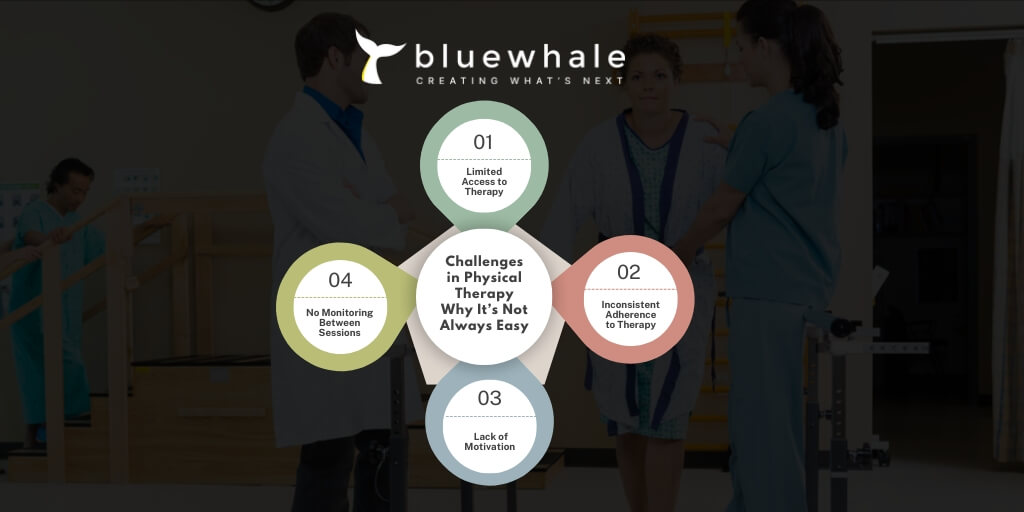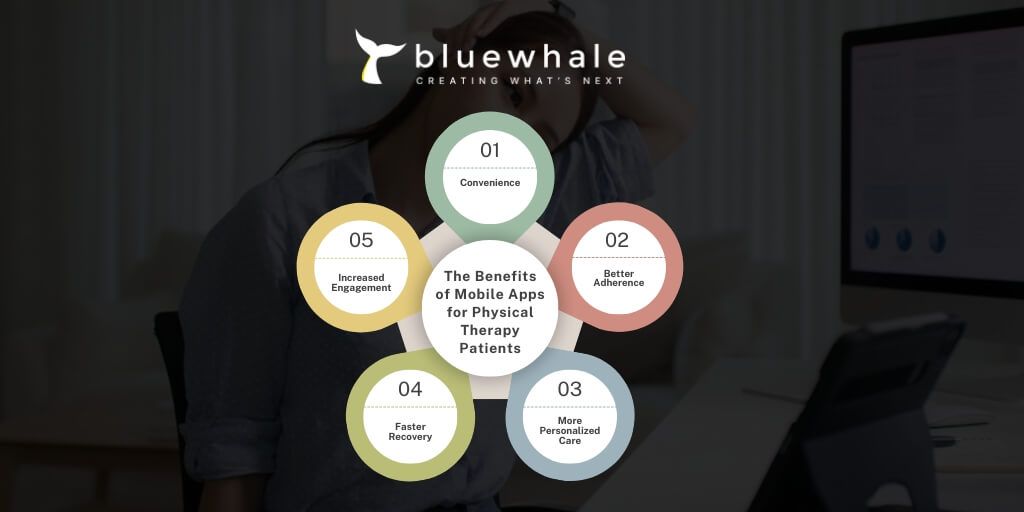Physical therapy is a crucial part of recovery for people who have suffered from injuries, surgeries, or chronic pain. However, many patients find it hard to stick to therapy schedules or remember to do their exercises regularly. This is where mobile apps are making a significant difference. By using mobile technology, patients can access therapy easily, track their progress, and stay motivated to follow through with their recovery plan. These apps have made therapy more accessible, effective, and engaging, leading to better outcomes for patients.
In this guide, we will explore how mobile apps are revolutionizing the field of physical therapy. We will discuss their key features, the challenges they address, and the technology and costs involved in developing these apps.
Key Highlights of the Physical Therapy Software Market
- The global physical therapy software market was valued at USD 1.29 billion in 2023 and is expected to grow to USD 2.78 billion by 2031, with a CAGR of 10.27%.
- Rising demand for physical therapy services is driven by an increase in musculoskeletal disorders, sports injuries, and age-related conditions.
- By 2050, nearly 1 billion people worldwide are expected to suffer from osteoarthritis.
- Cloud-based solutions held 66.14% of the market in 2023, allowing remote access and reducing operational costs.
- North America held around 39.89% of the market due to the high prevalence of musculoskeletal disorders, while Asia-Pacific is projected to grow significantly, driven by the aging population.
- Key players in the market include WebPT, Clinicient, Netsmart Technologies, PT Practice Pro, and Sword Health.
Challenges in Traditional Physical Therapy

Before we discuss how mobile apps are improving physical therapy, it’s important to understand some of the challenges that both patients and therapists face:
- Limited Access to Therapy
Many patients struggle to attend regular physical therapy sessions, especially those who live in remote areas. Traveling to clinics can be difficult and lead to missed appointments, which slows down recovery. - Inconsistent Adherence to Therapy
Patients often forget or skip their prescribed therapy exercises due to a lack of motivation or time. This inconsistency can significantly delay recovery. - Lack of Motivation
Recovery can be a slow process, and patients sometimes lose motivation if they don’t see immediate results. This can lead to missed exercises and slower progress. - No Monitoring Between Sessions
Therapists typically see patients once or twice a week, which makes it hard to monitor if patients are doing their exercises correctly in between sessions. Without proper technique, recovery may take longer.
How Mobile Apps are Improving Physical Therapy
Mobile apps have become a game-changer in physical therapy by offering convenient and effective solutions to these challenges. Here’s how they are transforming the landscape of physical therapy:
- Real-Time Video Sessions
With mobile apps, patients can attend virtual therapy sessions with their therapists via video. This makes therapy more accessible, especially for people with mobility issues or those living in remote areas.- Convenience: Patients can receive therapy from the comfort of their homes.
- Immediate Feedback: Therapists can provide real-time corrections and guidance during exercises.
- More Frequent Check-Ins: Patients can have more frequent sessions, allowing better progress monitoring.
- Progress Tracking
Mobile apps enable patients to log their exercises, track their pain levels, and monitor progress over time. This data helps both patients and therapists make informed decisions.- Data-Driven Decisions: Therapists can adjust treatment plans based on real-time data.
- Motivation: Seeing improvements in data encourages patients to stay consistent.
- Personalized Care: Therapists can tailor therapy plans based on individual progress.
- Reminders and Alerts
Mobile apps send reminders and notifications to patients to ensure they complete their exercises.- Regular Reminders: Notifications help patients remember to do their exercises.
- Increased Adherence: Studies show a 25% improvement in adherence when patients receive app-based reminders.
- Faster Recovery: Consistent adherence to therapy leads to 15% faster recovery times.
- Educational Resources
Many physical therapy apps offer video tutorials and articles to help patients understand their condition and exercises better.- On-Demand Learning: Patients can revisit tutorials to ensure they are doing exercises correctly.
- Knowledge Empowerment: Patients are more motivated and empowered when they understand their therapy plan.
- Better Communication with Therapists
Mobile apps offer built-in messaging systems that allow patients to communicate directly with their therapists.- Quick Support: Patients can ask questions or report issues, ensuring they receive proper support.
- Continued Engagement: Open communication keeps patients engaged and supported throughout their recovery.
The Benefits of Mobile Apps for Physical Therapy Patients

Mobile apps offer several benefits that make physical therapy more accessible and effective for patients.
- Convenience: Patients can attend therapy sessions, track their progress, and access resources from anywhere, offering flexibility that traditional therapy cannot.
- Better Adherence: Reminders and tracking features keep patients consistent with their exercises, leading to better recovery outcomes.
- More Personalized Care: Apps provide therapists with real-time data, allowing them to offer more tailored and effective treatment plans.
- Faster Recovery: Patients using apps tend to recover faster due to better adherence and the ability to adjust treatment plans quickly.
- Increased Engagement: Educational resources and better communication keep patients engaged and motivated, improving their overall therapy experience.
Types of Physical Therapy Apps and Their Key Features
| Type of Physical Therapy App | Key Features |
|---|---|
| Exercise Prescription and Progress Tracking | – Exercise Libraries with video tutorials – Progress Tracking (pain levels, motion, strength) – Reminders and Notifications – Personalized Exercise Plans – Performance Analytics |
| Telehealth and Virtual Therapy | – Real-time Video Consultations – Secure Messaging between patients and therapists – Session Scheduling – HIPAA-Compliant Data Security – In-app File Sharing (X-rays, reports) |
| AI-Powered Rehabilitation | – AI-Driven Exercise Recommendations – Automated Progress Tracking – Virtual Assistance (voice or chat AI) – Personalized Therapy Adjustments – Predictive Analytics for Recovery Trends |
| Wearable-Integrated | – Integration with Wearable Devices (Apple Watch, Fitbit, etc.) – Real-time Monitoring of Activity and Movement – Sync with Apple HealthKit or Google Fit – Heart Rate and Step Count Tracking – Progress Reports Based on Wearable Data |
| Pain Management and Recovery | – Pain Tracking Logs – Pain Relief Exercises and Stretches – Progress Charts on Pain Levels – Reminders for Pain Management Techniques – Relaxation and Mindfulness Features |
| Clinic Management and Patient Portal | – Appointment Scheduling and Management – Secure Payment Processing – Patient-Therapist Communication – Medical Record Access – Billing and Insurance Management |
The Technology Behind Developing Physical Therapy Apps
| Category | Technology/Tool Names |
|---|---|
| Mobile App Development Frameworks | React Native, Flutter, Swift, Kotlin |
| Backend Development & Cloud Infrastructure | Firebase, AWS, Microsoft Azure, Google Cloud Platform, Node.js |
| Database Management | MongoDB, PostgreSQL, GraphQL |
| Real-Time Communication Tools | Twilio, Agora |
| AI & Machine Learning Integration | TensorFlow |
| Wearable Technology Integration | Apple HealthKit, Google Fit, Wear OS SDK |
| Payment Processing Tools | Stripe |
Costs for Developing Physical Therapy Apps
| Category | Cost Estimate |
|---|---|
| Mobile App Development Frameworks | $10,000 – $50,000 (depending on complexity) |
| Backend Development & Cloud Infrastructure | $5,000 – $20,000 (for setup and ongoing costs) |
| Database Management | $2,000 – $10,000 (depending on data needs) |
| Real-Time Communication Tools | $1,000 – $5,000 (based on usage) |
| AI & Machine Learning Integration | $10,000 – $30,000 (for basic AI features) |
| Wearable Technology Integration | $5,000 – $15,000 |
| Payment Processing Tools | $1,000 – $3,000 (integration and fees) |
Total Estimated Cost: Basic App: $30,000 – $50,000
Advanced App: $50,000 – $150,000
Conclusion
Mobile apps are revolutionizing physical therapy by making it more accessible, engaging, and effective. These apps address many challenges, such as limited access to therapy and inconsistent adherence. With features like real-time video sessions, progress tracking, reminders, and educational resources, mobile apps empower patients to take control of their recovery and stick to their therapy plans.
For patients, the benefits are clear: faster recovery times, more personalized care, and greater convenience. As technology continues to evolve, mobile apps will play an even bigger role in helping people recover from injuries, surgeries, and chronic conditions more efficiently and effectively.






